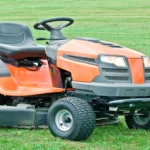Break up with your junk can be liberating and transformative. Clutter often leads to stress and inefficiency. Simplifying your space improves mental clarity and productivity. Start by categorizing items into keep, donate, and discard piles. Tackle one area at a time to avoid feeling overwhelmed.
Consistent effort and organization will help maintain a clutter-free environment. This process not only enhances your living space but also contributes to a more focused and peaceful lifestyle. Embrace minimalism and let go of things that no longer serve you. By following these steps, you create a more organized and serene space.
1. Set Clear Goals
Break up with your junk can be hard. Setting clear goals makes this task easier. Knowing what you want helps you stay focused. Let’s explore how to start this journey. Here are some steps to help you get rid of your junk.
Identify Your Junk
First, identify what junk you have. Look around your home. Make a list of items you no longer need. This will help you see the clutter.
Here are some tips to help you:
- Check your closets for old clothes.
- Look in your kitchen for unused gadgets.
- Scan your garage for forgotten tools.
- Review your bookshelves for unread books.
Sorting your items helps you decide what to keep. Create three piles: Keep, Donate, and Trash.
Use the table below to help you sort:
| Keep | Donate | Trash |
| Items you use daily | Gently used items | Broken or worn-out items |
| Sentimental items | Items in good condition | Expired items |
Identifying your junk is the first step. It helps you understand what you have. You can then move on to the next step.
Define Your Space
Defining your space helps you know where things belong. This keeps your home organized. Start by looking at each room. Think about how you use the space.
Here are some tips:
- Living Room: Keep only the items you use daily.
- Kitchen: Store gadgets you use often within reach.
- Bedroom: Make sure your bedroom is clutter-free for better sleep.
- Bathroom: Keep your bathroom essentials neat and accessible.
Creating zones in each room helps. For example, in the kitchen, have separate areas for cooking and eating. This makes it easier to keep things organized.
Use storage solutions to define your space. Baskets, bins, and shelves can help. Label them so everyone knows where things go. A well-defined space makes it easy to maintain order.
By defining your space, you create a home that is easy to live in. It also makes it simpler to keep junk at bay.
2. Create A Decluttering Plan
Break up with your junk can be hard. It’s easy to let things pile up. But a clutter-free home feels amazing. With a good plan, you can tackle the mess. This guide will help you create a decluttering plan. Let’s get started!
Prioritize Areas
Start by prioritizing areas in your home. Identify which spaces need the most attention. This will help you focus your efforts. Make a list of the most cluttered spots.
Here are some common areas to consider:
- Kitchen counters
- Bedroom closets
- Living room shelves
- Bathroom cabinets
- Garage or storage rooms
Once you have your list, rank the areas. Focus on one area at a time. This makes the task less overwhelming. For example, start with the kitchen. Clear off the counters. Then move to the next area.
A clean space makes it easier to keep things tidy. You’ll feel more motivated as you see progress. Stick to your list and tackle one spot at a time.
Set Timelines
Setting timelines is key to staying on track. Break down your tasks into smaller steps. This makes them more manageable. Create a schedule that works for you.
Here’s a simple timeline example:
| Day | Task |
| Monday | Clear kitchen counters |
| Tuesday | Organize bedroom closet |
| Wednesday | Tidy living room shelves |
| Thursday | Sort bathroom cabinets |
| Friday | Declutter garage |
Stick to your timeline. If you miss a day, don’t stress. Just pick up where you left off. Consistency is key. Celebrate your progress along the way. Small wins add up to big results.
3. Start Small
Break up with your junk can be a liberating experience. Too much clutter can make you feel overwhelmed and stressed. By starting small and taking manageable steps, you can reclaim your space and peace of mind. In this blog post, we will discuss 10 ways to break up with your junk. We will begin with the first step: start small. This method involves focusing on one room at a time and tackling daily mini-projects.
One Room At A Time
Focusing on one room at a time helps you to stay organized and motivated. It prevents you from feeling overwhelmed by the task at hand. Here’s how you can get started:
- Pick a room: Choose a room that needs the most attention.
- Set a timer: Work for a set amount of time, like 30 minutes.
- Sort items: Separate items into three piles: keep, donate, and throw away.
Breaking tasks into smaller chunks makes the process easier to manage. This approach helps you to see progress quickly. It also keeps you motivated to continue decluttering other rooms.
Here is an example of how you can plan your decluttering for a week:
| Day | Room | Task |
| Monday | Living Room | Sort through books and magazines. |
| Tuesday | Kitchen | Organize pantry and toss expired items. |
| Wednesday | Bedroom | Clean out dresser drawers. |
| Thursday | Bathroom | Dispose of old toiletries. |
| Friday | Closet | Donate clothes you no longer wear. |
Daily Mini-projects
Daily mini-projects make decluttering a part of your routine. They require less time and effort, yet yield significant results.
Here are some ideas for daily mini-projects:
- Declutter a drawer: Pick one drawer to organize each day.
- Clear a shelf: Tackle one shelf in your closet or pantry.
- Tidy up a countertop: Remove unnecessary items from a kitchen or bathroom countertop.
These small tasks can be completed in just 10-15 minutes. They help you to maintain a clutter-free environment without feeling overwhelmed. By making decluttering a daily habit, your home will stay organized and tidy.
Here is an example of a daily mini-project schedule:
| Day | Mini-Project |
| Monday | Clean out your junk drawer. |
| Tuesday | Organize your spice rack. |
| Wednesday | Sort through your mail pile. |
| Thursday | Arrange your bathroom cabinet. |
| Friday | Tidy up your home office desk. |
Daily mini-projects help you to stay on top of clutter. They ensure that your home remains organized and stress-free.
4. Use The Four-box Method
Break up with your junk can seem like a big task. It’s hard to let go of things you once loved. But, it’s important to have a clutter-free home. One great way to do this is the Four-Box Method. This method helps you decide what to keep, toss, donate, or repair. It’s simple and very effective. Let’s dive into how you can use this method to make your home tidy and organized.
Keep, Toss, Donate, Repair
To start, get four large boxes. Label them as Keep, Toss, Donate, and Repair. The Keep box is for items you love and use often. These items should have a special place in your home. The Toss box is for items that are broken or useless. These should go straight to the trash. The Donate box is for items that are still good but you no longer need. Someone else could benefit from these items. The Repair box is for items that need fixing. Plan a time to repair them soon.
Use these tips to decide what goes in each box:
- Ask yourself if you have used the item in the last year.
- Consider if the item holds sentimental value.
- Think about if you would buy the item again.
- If the item is broken, decide if it’s worth fixing.
Remember, the goal is to reduce clutter. Be honest with yourself. If you don’t need it, let it go. This will make your home feel more open and clean. It’s important to stay focused and not get distracted. This method will help you make quick and easy decisions.
Label Your Boxes
Labeling your boxes is a crucial step. Clear labels help you stay organized. Use a large marker to write on each box. Make sure the labels are easy to read. You can also use colored tape to mark each box. This makes it even easier to sort items quickly.
Here are some labeling tips:
- Use different colors for each category.
- Write in big, bold letters.
- Place labels on multiple sides of the box.
- Keep the labels simple and clear.
Examples of labels:
| Box | Label |
| Keep | Items you love and use |
| Toss | Broken or useless items |
| Donate | Good items you don’t need |
| Repair | Items that need fixing |
Having clear labels will make the process smoother. You will know exactly where each item goes. This will save you time and effort. Plus, it will help you stay on track. Your home will be clutter-free in no time.
5. Involve Friends Or Family
Break up with junk can be tough. But you don’t have to do it alone. Involving friends or family can make the process easier and more fun. This blog post will explore how having an accountability partner and organizing a group decluttering day can help you get rid of clutter and enjoy a cleaner space.
Accountability Partner
Having an accountability partner can make a huge difference. This person can be a friend or family member who supports you. They keep you motivated and on track. Here’s how to make the most of an accountability partner:
- Set clear goals together. Decide what areas you want to declutter first.
- Schedule regular check-ins. This can be daily or weekly, depending on your needs.
- Encourage each other. Share your progress and celebrate small wins.
- Offer constructive feedback. Help each other stay focused and avoid distractions.
For example, you might have a weekly call with your partner. During the call, you both talk about what you’ve accomplished. You also discuss any challenges and plan your next steps. This ongoing support can be very powerful.
Another idea is to use a shared online document. You can both update it with your goals and progress. This keeps everything organized and visible. Seeing your progress in writing can be very motivating.
Group Decluttering Day
Organizing a group decluttering day can be a fun and effective way to get rid of junk. Gather a few friends or family members and spend the day working together. This creates a sense of community and makes the task feel less overwhelming.
Here are some steps to organize a successful group decluttering day:
- Choose a date and time that works for everyone.
- Decide on a location. It could be your home, a friend’s house, or even a community center.
- Prepare supplies. Make sure you have boxes, bags, and labels ready.
- Set up a plan. Decide which areas to tackle first and assign tasks to each person.
- Take breaks and have snacks. This keeps everyone energized and happy.
During the decluttering day, you might divide into small teams. Each team works on a different area. For example, one team could focus on the kitchen while another tackles the garage. Working together makes the process faster and more enjoyable.
At the end of the day, you can have a small celebration. Enjoy a meal together or take a group photo to remember your hard work. This makes the experience positive and rewarding.
6. Adopt The One-in-one-out Rule
Break up with your junk can be hard. Clutter builds up over time, making it difficult to let go. By adopting the One-In-One-Out Rule, you can make the process easier. This rule helps you manage your items better. Let’s explore how you can use this rule to make smarter choices.
New Purchases
New purchases can be exciting, but they can also lead to clutter. The One-In-One-Out Rule means that for every new item you buy, you must let go of an old one. This keeps your space organized and prevents unnecessary buildup.
Here are some tips to manage new purchases:
- Think before you buy. Ask yourself if you really need the item.
- Choose quality over quantity. High-quality items last longer and reduce the need for replacements.
- Donate or sell old items. This can make parting with them easier.
Implementing this rule can be simple with a few steps:
| Step | Action |
| 1 | Identify the new item you want to buy. |
| 2 | Find an old item to discard. |
| 3 | Purchase the new item only after removing the old one. |
Sticking to these steps ensures you maintain balance at home. Your space stays clean and clutter-free.
Preventing Accumulation
Preventing accumulation is key to a clutter-free life. The One-In-One-Out Rule helps keep things in check. By following this rule, you can avoid unnecessary clutter.
Here are some strategies to prevent accumulation:
- Regularly review your items. This helps you identify what you no longer need.
- Set limits on storage space. Only keep items that fit within these limits.
- Stay mindful of your purchases. Avoid impulse buying.
Another way to prevent accumulation is to have a decluttering schedule:
| Timeframe | Action |
| Weekly | Check for items to discard. |
| Monthly | Deep clean and remove unnecessary items. |
| Yearly | Review all belongings and donate or sell what you don’t need. |
Following this schedule helps in keeping your space organized. You will feel more in control of your belongings. Your home will be a peaceful, clutter-free environment.
7. Utilize Digital Tools
Break up with your junk can feel overwhelming. Yet, digital tools can make this process easier. You can use apps and online platforms to help you organize and declutter. This blog post will show you how to utilize digital tools effectively.
Apps For Organization
Many apps can help you organize your space. These apps are simple to use and very effective.
Here are some top recommendations:
- Trello: This app helps you create boards to organize tasks. You can use it to list items you want to keep or discard.
- Sortly: Sortly is great for making an inventory of your belongings. You can categorize items with photos and descriptions.
- Decluttr: This app helps you sell unwanted items. You can scan barcodes to get instant prices and sell them easily.
Using these apps can save time and reduce stress. They are easy to download and start using right away.
Here is a table summarizing their features:
| App | Feature |
| Trello | Task boards, lists, and cards |
| Sortly | Inventory with photos and categories |
| Decluttr | Scan barcodes, instant prices, easy selling |
Virtual Inventory
Creating a virtual inventory can help you keep track of your items. This method is both efficient and effective. You can use apps or even simple spreadsheets.
Start by taking photos of each item. Add a description and categorize them. Some apps like Sortly make this process easier. You can also use Google Sheets or Excel.
Here is a simple process to create a virtual inventory:
- Take photos: Capture clear images of each item.
- Describe items: Write a short description for each.
- Organize: Categorize items into groups like clothes, books, or kitchenware.
- Store: Save this information in an app or spreadsheet.
Having a virtual inventory helps you see what you own. It makes it easier to decide what to keep or discard. This method also helps you stay organized in the long run.
8. Schedule Regular Cleanouts
Break up with your junk can feel overwhelming. Clutter accumulates over time and can impact your mental well-being. Scheduling regular cleanouts helps keep your space tidy and your mind clear. Let’s explore two effective strategies: Monthly Check-Ins and Seasonal Purges.
Monthly Check-ins
Monthly check-ins are a simple way to stay on top of your clutter. Spend a few hours each month reviewing your belongings. This habit ensures that junk does not pile up.
Here are some tips for your monthly check-ins:
- Set a specific day each month for your check-in.
- Sort items into categories: Keep, Donate, and Trash.
- Use bins or boxes to organize items temporarily.
Consistency is key. By making this a monthly routine, you will find it easier to manage your space. A little effort each month can save you from a big cleanup later.
| Category | Action |
| Keep | Find a proper place for these items. |
| Donate | Box them up and take them to a donation center. |
| Trash | Throw away or recycle. |
Seasonal Purges
Seasonal purges are perfect for a deeper clean. Each season brings different needs and items to sort through. For example, winter clothes can be stored or donated in spring.
Here’s how to carry out a seasonal purge:
- Identify the items you haven’t used in the past season.
- Assess if these items will be needed next season.
- Decide whether to keep, donate, or trash.
Seasonal purges can be more extensive than monthly check-ins. They allow you to refresh your space according to the time of year. This can also help you rediscover items you forgot you had.
A seasonal purge can include:
- Clothing: Rotate seasonal clothes and donate what you no longer wear.
- Decorations: Store or get rid of seasonal decorations.
- Outdoor gear: Clean and organize gear according to the season.
9. Celebrate Your Progress
Break up with your junk can be a tough journey. But celebrating your progress makes it easier. Small wins lead to big victories. It’s important to stay motivated and reward yourself. Sharing achievements can also help keep you on track. Let’s dive into some ways to celebrate your progress and stay junk-free.
Reward Yourself
Rewards make the journey fun. They keep you motivated.
Here are some ways to reward yourself:
- Buy a new book: Find a book that excites you.
- Enjoy a spa day: Treat yourself to a relaxing day.
- Go out for a nice meal: Choose your favorite restaurant.
- Take a short trip: Explore a new place nearby.
- Watch a movie: Pick a movie you’ve wanted to see.
Rewards should match your progress. For small wins, choose smaller rewards. For bigger milestones, pick something special. This way, you stay excited about your journey.
Keeping a reward chart can help. List your goals and rewards. Check off each goal as you achieve it. This visual aid keeps you focused. It also gives you something to look forward to.
Share Achievements
Sharing achievements boosts your morale. It also inspires others.
Here are some ways to share your success:
- Post on social media: Share your journey with friends.
- Join a support group: Find others on the same path.
- Tell your family: Let them know about your progress.
- Write a blog: Document your journey online.
- Celebrate with friends: Plan a get-together to celebrate.
Sharing makes your journey less lonely. It also keeps you accountable. People will cheer you on. They will also ask about your progress. This keeps you motivated to continue.
Encouraging others is also fulfilling. Your story can inspire someone else to start their journey. This creates a positive ripple effect. Everyone benefits from shared success.
10. Maintain A Minimalist Mindset
Break up with your junk is a journey towards a more meaningful life. It involves letting go of unnecessary items and embracing simplicity. Maintaining a minimalist mindset can help you achieve this. This blog post will guide you through valuing experiences over things and practicing mindful consumption.
Value Experiences Over Things
Experiences bring more joy than material possessions. Memories made from experiences last a lifetime. They create happiness that objects cannot match. A vacation, a hike, or a simple picnic can be more fulfilling than buying new gadgets or clothes.
Here are some reasons to value experiences:
- Memories last longer than the thrill of new things.
- Experiences improve relationships by spending quality time together.
- Learning and growth occur through new experiences.
- Less clutter in your home and mind.
Investing in experiences often leads to personal growth. For example, travel can teach you about new cultures. Attending a workshop can improve your skills. These experiences enrich your life in ways that objects cannot.
Making memories with loved ones strengthens bonds. Shared experiences can bring you closer to friends and family. It creates a sense of connection and belonging. So, prioritize experiences over material things for a happier life.
Mindful Consumption
Mindful consumption means being aware of what you buy and why. It involves making intentional choices about your purchases. This practice helps reduce waste and clutter. It also saves money and protects the environment.
Here are some tips for mindful consumption:
- Think before buying. Ask yourself if you really need it.
- Choose quality over quantity. Buy items that last longer.
- Support sustainable brands. Look for eco-friendly options.
- Reduce impulse buying. Wait 24 hours before making a purchase.
Mindful consumption encourages you to buy only what you need. This reduces the amount of junk in your life. It also helps you appreciate what you have. Owning fewer items can lead to a simpler, more peaceful life.
Supporting sustainable brands is another way to practice mindful consumption. These brands often use eco-friendly materials. They also promote fair labor practices. By choosing them, you contribute to a better world.
So, be mindful of what you buy. Make choices that align with your values. This will help you maintain a minimalist mindset and break up with your junk.
Conclusion
Break up with your junk is a transformative journey. Implement these 10 strategies to declutter effectively. Embrace a cleaner, more organized space. Your mental clarity and productivity will thank you. Start today and witness the positive changes in your life. Enjoy a clutter-free, serene environment and boost your well-being.







